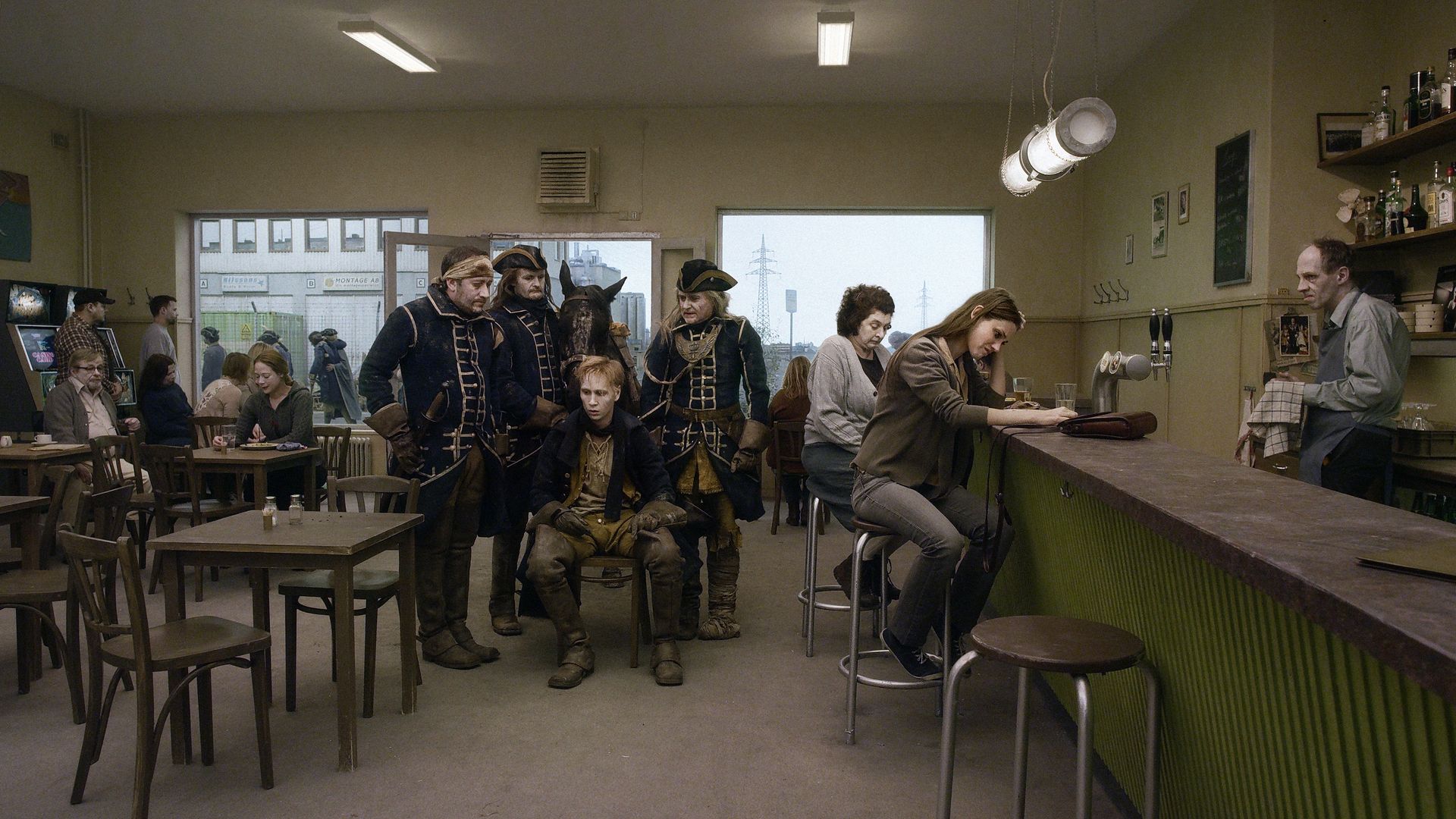
King of TV commercials, Roy Andersson is also the auteur behind a series of bizarre, playful full-length masterpieces.
There are a good many film directors who got their start making commercials. Which would be fine if most of them didn’t make it so blindingly obvious, with their flashy-yet-vacuous imagery and pointlessly fast cutting.
Let’s not tar every ad director with the same brush, though. Roy Andersson has spent much of his working life churning out commercials but that hasn’t stopped him from becoming one of the most significant filmmakers of our age. What’s more, his films are the very opposite of the caffeinated clichés that most former advert directors fob us off with, offering a singular vision; no director has cultivated such a unique personal style, as a new box-set that gathers his major work together demonstrates time and again.
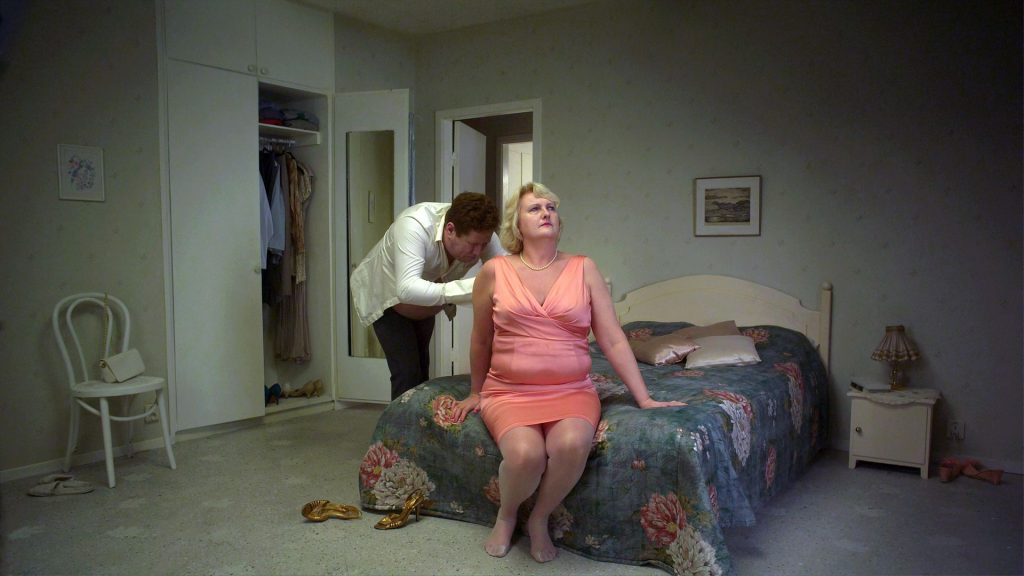
Unlike most directors who move between adverts and cinema, Andersson actually began in the big leagues before scaling back. Born in Gothenburg, in 1943, he was a star pupil at Swedish Film Institute, quickly establishing himself as a prodigious talent and earning an early opportunity to make his first feature, A Swedish Love Story (1970).
It is a very different film to those he would later make, but no less accomplished. It tells of a relationship between a young woman and an older man (she’s 13, he’s 14). It’s not just a wonderfully observed depiction of first love; the purity of the central romance is contrasted between the messy, and not especially happy, lives of the adults in their lives, and the near-certainty that the kids will end up in much the same sort of way.
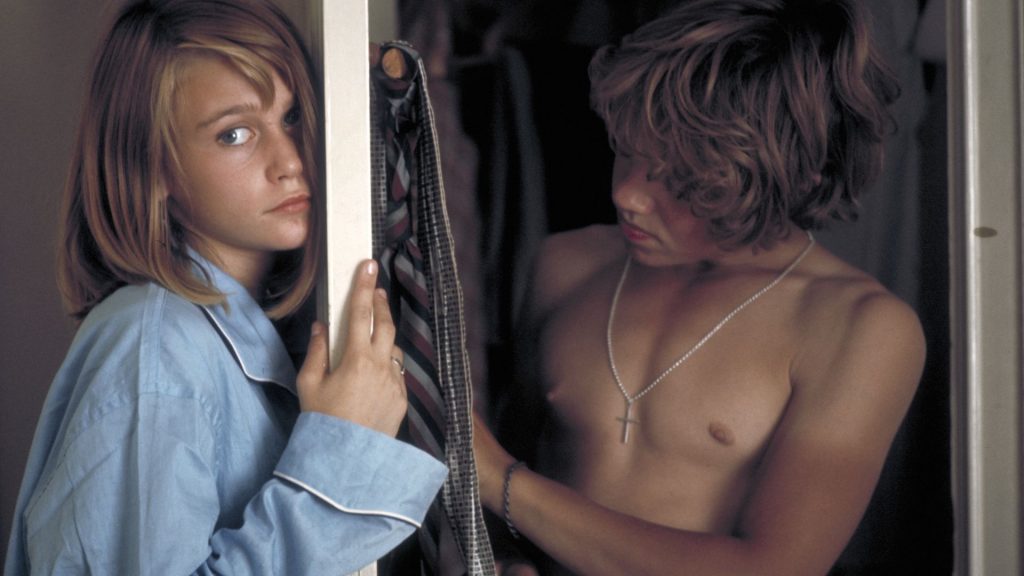
If it looks almost conventional these days (by its director’s standards, that is), no one noticed at the time. It was garlanded with awards (it won four at the Berlin Film Festival alone) and praise: Andersson was a young master, the greatest Swedish filmmaker since Ingmar Bergman, the future of European film.
Or not, as the case may be. His next film, Gillap (1975 and sadly excluded from this latest box-set, as it has been from many round-ups of his work) met with a rather frostier reaction. Having gone wildly over budget – he’s a bit of a perfectionist, is our Roy – the film was a notable flop. A far darker, far colder film than A Swedish Love Story, the critics tore strips off it (“Maybe the most negative reviews ever in Sweden!,” he told one interviewer) and audiences were no keener.
The former golden boy suddenly found it impossible to get a new project off the ground. That was when he turned to advertising. Driven by necessity though he was, he found there were advantages, even beyond any financial rewards. TV commercials were becoming more ambitious and there were ample opportunities for imaginative filmmakers to experiment. What’s more, they gave him a bigger audience than ever he’d enjoyed with his big-screen work.
Andersson estimates he’s made something like 400 commercials across the span of his career, including for the likes of Volvo, Air France, Citroen and McDonalds. Along the way, he was able to play around with different ideas and styles, establishing his own distinctive voice in the process: deadpan comedy, slightly skew-whiff visuals and defiantly ordinary performers – not for him glamorous models or superstar endorsements.
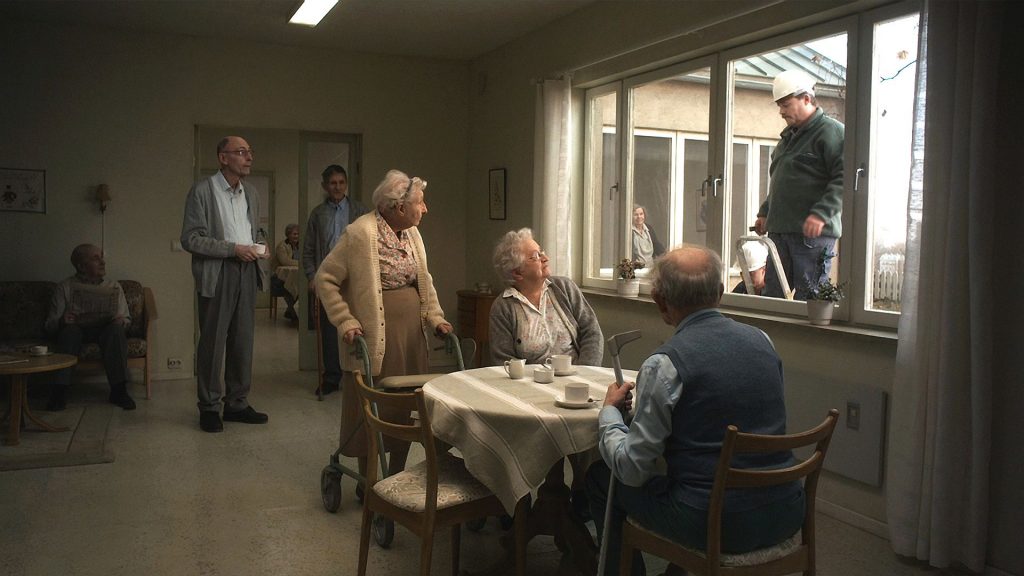
He’s not the only auteur of the TV commercial – Ridley Scott might have something to say about that – but his work bore an idiosyncratic stamp that won awards and shifted product: “the best commercials director in the world,” according to the aforementioned Ingmar Bergman.
It says something about Andersson that, unlike many lesser talents, he declined the overtures of movie producers: when he was ready to make another movie, it would be on his terms. That moment finally came with Songs From The Second Floor. According to how you want to date it, it’s the last masterpiece of the Twentieth Century or the first masterpiece of the Twenty-First (it premiered in 2000 but he’d been shooting it, off and on, for four years, paying for much of it out of his own pocket.)
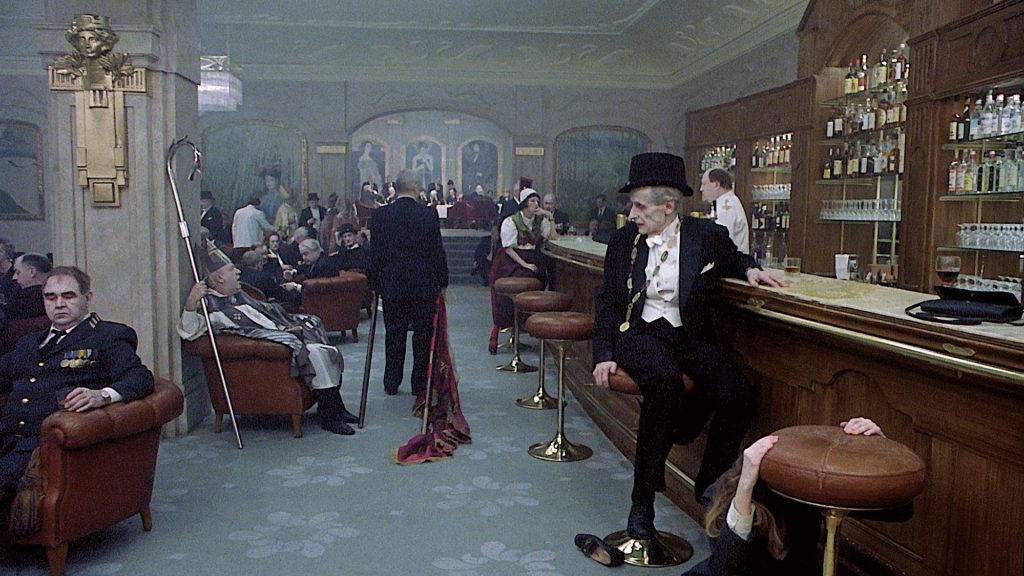
It is an almost impossible film to describe, a succession of short vignettes each of them shot with a static camera from medium distance (there is one camera move in the entire film). The recurrent character of Kalle (Lars Nordh) provides the closest thing to a story: he’s a disappointed middle-aged man whose life is falling apart: his son “went nuts” after “writing poetry” and he’s just torched his furniture shop for the insurance money.
Meanwhile, the world is ending: the nameless city where it’s set is convulsed both by ghosts and an endless traffic jam. Businessmen consult crystal balls and in one ineffable sequence, a sacrifice is prepared to pacify the gods. Obviously, it’s a comedy. Obviously.
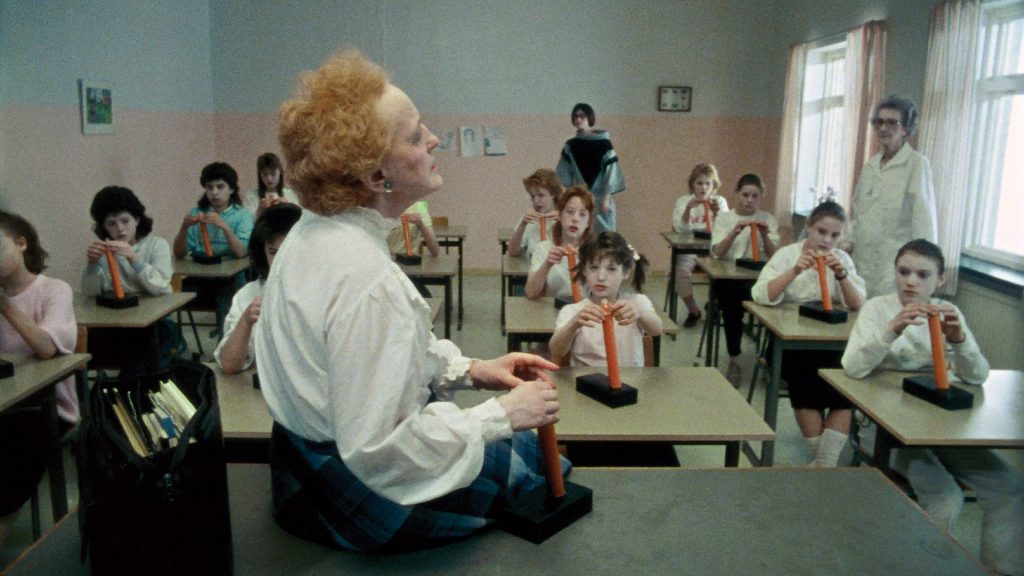
Andersson claims he was influenced by the Peruvian Poet César Vallejo, in particular his poem Stumble Between Two Stars, and film buffs pointed out influences ranging from Jacques Tati to Luis Bunuel but really, this is one of the rarest of things in cinema: a wholly original film. Indeed, the rest of the world still hadn’t even begun to catch up by the time of his next film, You, The Living (2007), a slightly sunnier – but equally funny – film made with the same remarkable style, a style the critic David Thomson describes as “’film flat’ – [an] absolutely calm, unexcitable view of the dreadfulness of life.”
Things aren’t quite the same here, and not just because Andersson moves the camera at least twice: the millennium has passed and the world didn’t collapse, and instead we’re entranced by dreams and also disappointments: characters loop in and out and we end – sort of – at the beginning.
But the director exerts the same iron control of the visuals, right down to insisting that everything – including all the exteriors – be built in the studios to create a hyperreal environment. The use of light is extraordinary, delicately positioned to eliminate shadows (“There should not be a possibility for people to hide,” as he put in one interview). Only when he’s happy with that does he begin to shoot the scene, often filming upwards of 50 takes until he’s got what he wants.
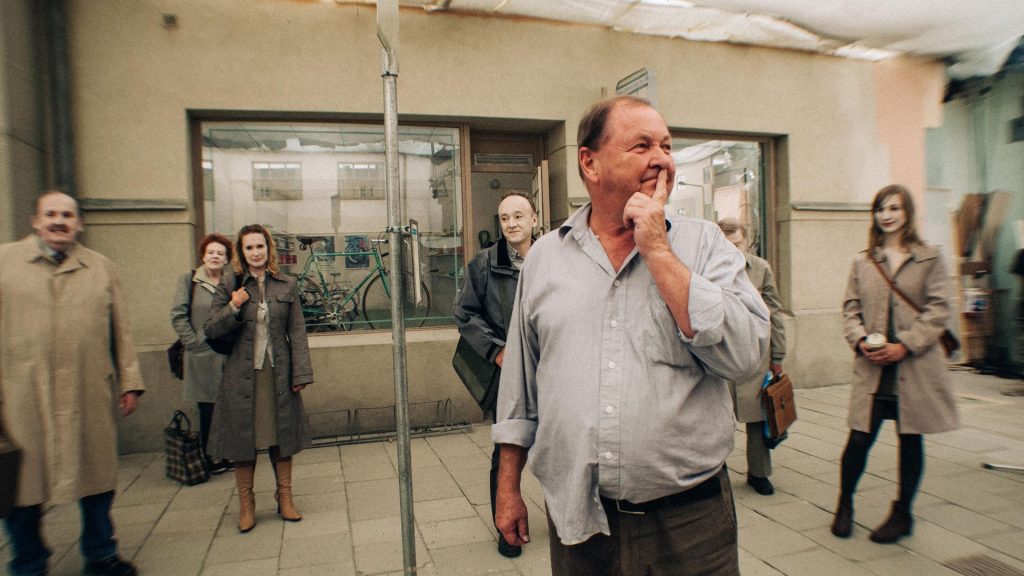
Although Andersson’s work is emphatically not ‘difficult’ or ‘challenging’ – it’s consistently playful and often laugh-out-loud funny – it resists easy explanation: if the symbolism of Songs From the Second Floor is straightforward, his films since then do their level best to defy interpretation. That, though, is all part of the fun: the best way to appreciate them is to lose yourself in these beautiful labyrinths.
Nevertheless, Andersson himself maintains he has a clear idea of what he’s trying to do. For his next film, the splendidly named A Pigeon Sat On A Branch Reflecting on Existence, he cited his influences as Breughel’s Hunters in the Snow, Homer and the Neue Sachlichkeit art movement, although quite how they fit into the notional main story of a pair of door-to-door salesmen selling novelties like vampire teeth is anyone’s guess. (Others suggest Samuel Beckett, by no means a bad comparison).
Along the way there are critiques of nationalism – the (18th century) Swedish king Karl XII and his entire army stop off at a (modern) transport caff on their way to invade Russia in a scene that’s maybe the best thing the director has ever done – and colonialism ancient and modern: some Victorian colonists do unspeakable things to the natives in a sequence that also alludes to a more recent scandal involving a Swedish company, some toxic waste and hundreds of poisoned people in South America.
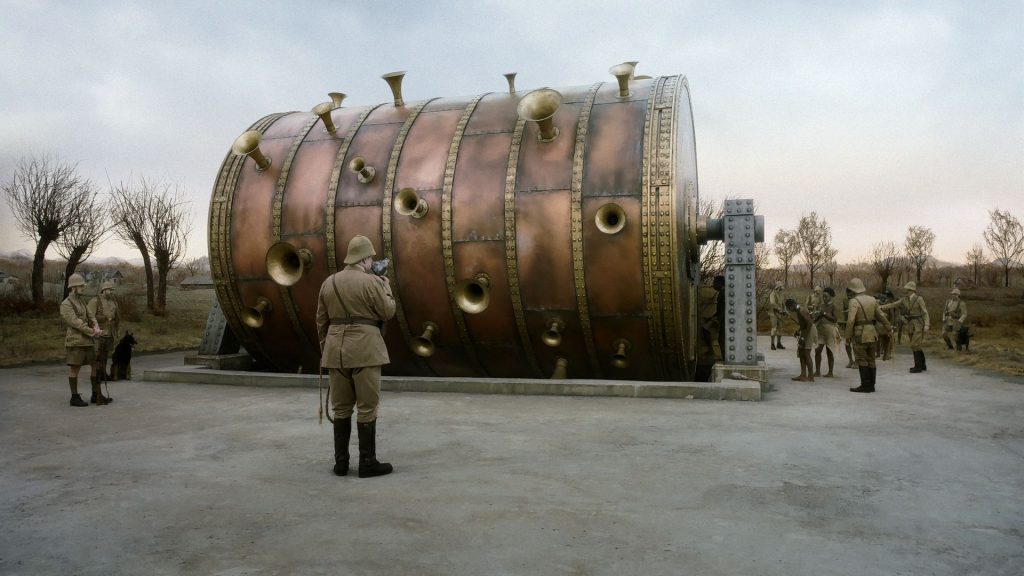
But for all these elaborate detours, his ultimate interest is simple. Running like a thread through all his work, from the earliest to most recent, is his great interest in, and compassion for, people. Surrealist he may be but he’s fascinated how we navigate this inexplicable world and how we cope with what it throws at us; “I’m trying to show what it’s like to be human and to be alive,” he has said, and whether in a teenage romance or epically weird dream sequences that’s exactly what he does.
And he’s still at it. The roll-out of his latest film About Endlessness was sabotaged by the plague but it’s available in the latest set and finds him on peak form. It’s loosely inspired by the Arabian Nights (‘loosely’ being the appropriate word) and, as the title suggests, his own musings on mortality – he’s 78 now and has hinted at retirement – but, as ever, the metaphysics are balanced by mordant comedy and the same inexplicable events: in 78 rip-roaring minutes, the film encompasses people flying, Hitler in his bunker, and murder.
It’s very much to be hoped that he has another film or two in him. In an age when cinema – even art cinema – is happy to settle for formulas and retreads, he is a reminder that the medium is still capable of surprises yet. Let him stand too as an inspiration to directors of adverts: why just flog product when you can make art? Be inspired.
The Roy Andersson Collection is available on Blu-ray now via Curzon Artificial Eye
What do you think? Have your say on this and more by emailing letters@theneweuropean.co.uk









